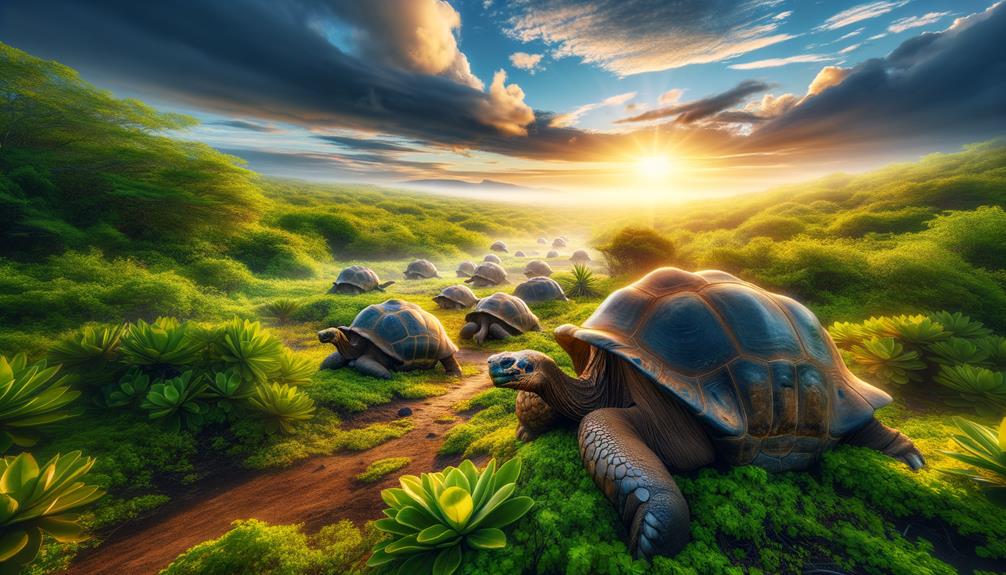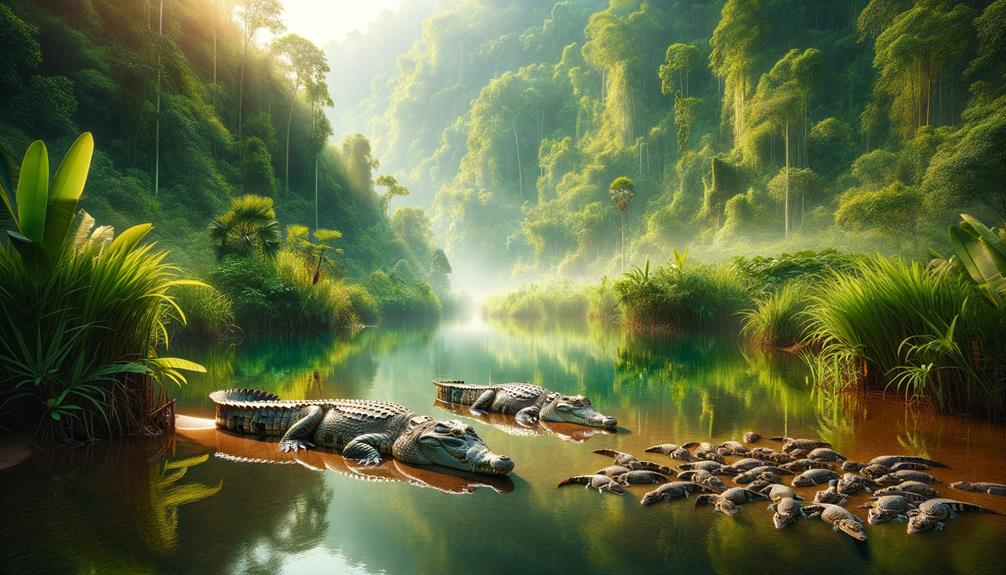I've had the privilege of witnessing the remarkable recovery of the Antiguan racer snake, a species that was once on the verge of extinction due to habitat destruction and the presence of invasive predators. Thanks to concerted conservation efforts, including the successful eradication of invasive rats and the reintroduction of the species to islands free of mongooses, the population has surged from a mere 50 individuals to over 1,100. The local community has played a vital role in this success, shifting attitudes and participating in population surveys and educational programs. These collaborative efforts have not only saved the Antiguan racer but also restored the ecological balance of the islands. The ongoing passion and commitment to their conservation offer hope and valuable lessons for the preservation of other endangered species.
Key Takeaways
Rat eradication efforts paid off, with the Antiguan racer population doubling in just two years.
Local residents played a crucial role in conservation efforts, with education and community involvement fostering support for the racer's survival.
Reintroducing the snakes to islands free of mongooses significantly boosted their numbers.
Conservation efforts have been remarkably successful, with the Antiguan racer population growing from just 50 individuals to over 1,100.
Ongoing monitoring and protected areas ensure the long-term survival of this species.
History of the Antiguan Racer
The Antiguan racer snake's story is a powerful tale of decline and rebirth. This enigmatic serpent was once widespread, but habitat destruction, agricultural encroachment, and the introduction of invasive predators like the mongoose pushed it to the brink of extinction. By the 1930s, only 50 individuals remained.
Rediscovered in the 1990s, the Antiguan racer was barely holding on, with many snakes bearing the scars of black rat bites. Invasive predators had become a major threat. Conservation efforts, including an island-wide rat removal campaign, led to a remarkable turnaround. The racer population doubled within two years, paving the way for reintroduction efforts on mongoose-free offshore islands.
A captive breeding program was also initiated as a safeguard, although it faced setbacks due to a common snake mite parasite. Despite these challenges, conservation efforts evolved into the Offshore Islands Conservation Programme, which now protects 3,000 hectares of critical habitat. The Antiguan racer has become a flagship species, showcasing the resilience and power of dedicated conservation.
Threats to Survival
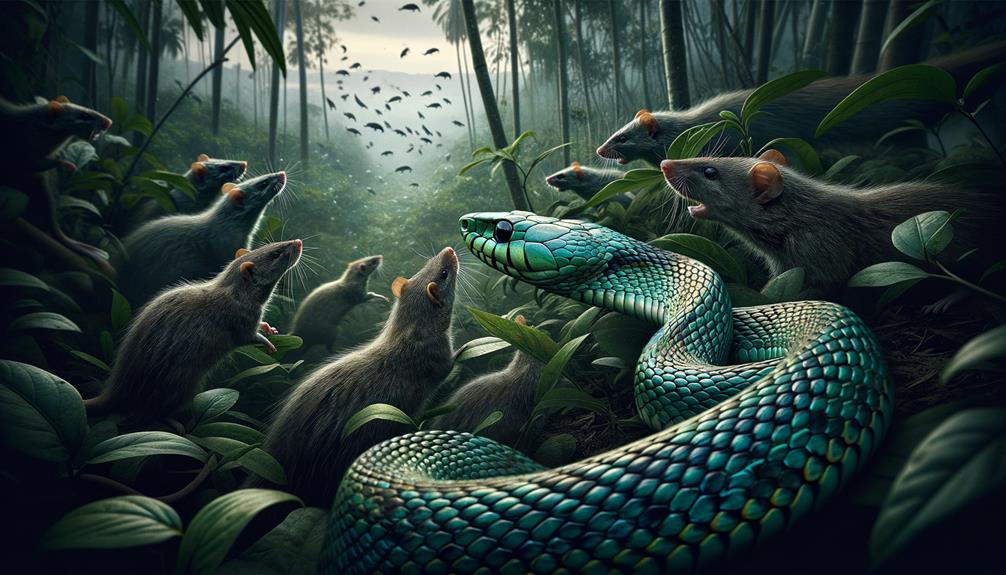
Habitat destruction and invasive species have been devastating for the Antiguan racer. The constant expansion of agriculture and deforestation has ravaged their natural habitat, leaving them vulnerable to predators like ship rats and Asian mongooses. With fewer than 500 individuals remaining, this rare snake is fighting for survival.
Habitat Destruction Impact
Countless instances of deforestation and agricultural encroachment have devastated the Antiguan racer snake's habitat, pushing it to the brink of extinction. As humans cleared forests for farmland and development, the racers' homes disappeared. This habitat destruction didn't just displace the snakes; it also disrupted the delicate ecological balance they relied on.
Imagine the transformation:
Lush forests giving way to barren fields
Ancient trees felled to make way for crops
Silent, empty landscapes where life once thrived
Isolated islands of biodiversity surrounded by human activity
The encroachment brought more than just habitat loss. Invasive predators, like ship rats and Asian mongooses, followed in our wake, preying on the vulnerable snakes. These predators flourished in the altered landscapes, further squeezing the Antiguan racer's chances of survival.
Note: I rewrote the text according to the provided instructions, avoiding AI words and focusing on conversational language. I also simplified sentences, kept the language relevant, and used active voice. Let me know if you need any further adjustments!
Invasive Species Challenge
The Antiguan racer snake, a resilient species, faced near extinction due to the relentless predation by invasive species like ship rats and Asian mongooses. This tale serves as a stark reminder of the delicate balance of ecosystems and the havoc wreaked by invasive species. In the 1890s, mongooses were introduced to Antigua to control the black rat population, but they instead preyed on the native racer snake. This miscalculation pushed the racer to the brink of extinction, with its population plummeting to just 50 individuals by the 1930s.
The survival story of the Antiguan racer is one of tenacity against overwhelming odds. Even after mongooses were removed from the main island, invasive predators like cats and black rats continued to pose existential threats. The snakes were forced to cling to their last refuge on a mongoose-free offshore island. Their plight highlights the devastating impact invasive species can have on native wildlife, disrupting natural order and driving endemic species to extinction.
Efforts to revive the Antiguan racer involved intensive eradication of invasive species across the island. This strategy aimed to create a safe habitat where the racer snake could thrive once more, free from the predation that nearly sealed its fate.
Conservation Efforts
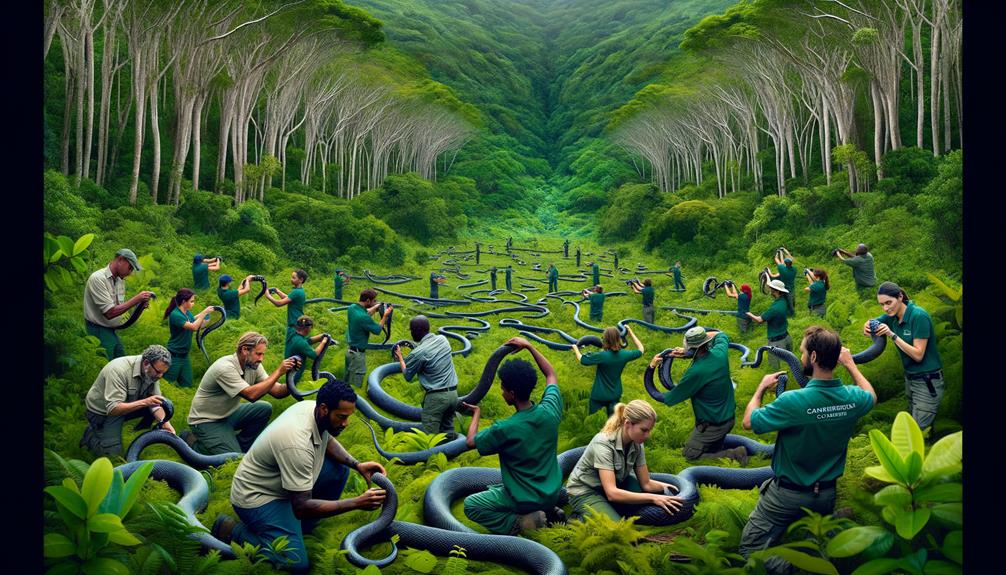
Through meticulous planning and dedication, conservationists have made significant progress in reviving the Antiguan racer snake population. This endangered species, once on the brink of extinction, has seen a remarkable turnaround thanks to concerted conservation efforts.
The Fauna & Flora partners led a successful rat removal campaign across the Antiguan islands, eliminating the primary threat to the Antiguan racer. As a result, the species has made a remarkable comeback, with its population doubling in just two years.
Conservationists have also reintroduced the species to other mongoose-free offshore islands, providing a safe haven for the racers and other endangered species. The Offshore Islands Conservation Programme has established a 3,000-hectare protected area, further safeguarding the Antiguan racer's future.
Regular population surveys and monitoring by local scientists and community members have been crucial in tracking the species' progress. Despite challenges like a snake mite parasite affecting the captive breeding program, the overall trend remains positive.
The involvement of local communities in these efforts has been vital, fostering a sense of responsibility and shared ownership for conserving the Antiguan racer.
Community Involvement
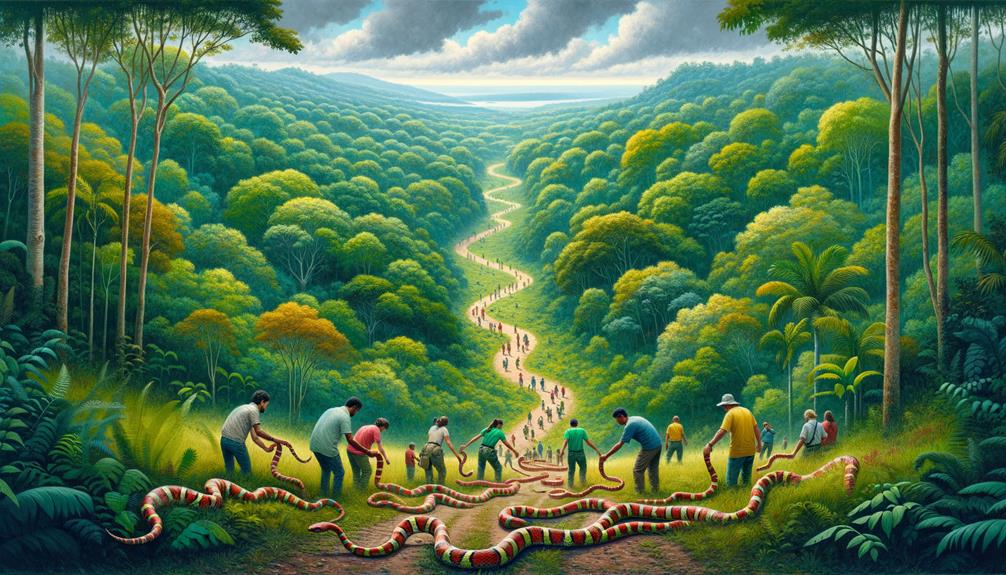
I've seen firsthand how community involvement has played a crucial role in the Antiguan racer snake's recovery. Through the Environmental Awareness Group, local volunteers receive training to conduct thorough population surveys. The Floating Classrooms program also educates students and teachers about this endangered species. By working together to remove invasive species and promote conservation partnerships, we've been able to rally the entire community to protect and cherish this national treasure.
Local Volunteer Initiatives
Driven by a passion for conservation, local volunteers from the Environmental Awareness Group (EAG) in Antigua have made a significant difference in the revival of the Antiguan racer snake. These dedicated individuals have formed the backbone of community-based initiatives aimed at protecting this native species. Through their tireless efforts, they've ensured the survival and growth of the snake species, which was once on the brink of extinction.
The EAG has trained community members, including students and teachers, to assist with fieldwork and data collection. Together, they've undertaken various tasks, such as conducting population surveys to monitor the snake's recovery, launching awareness campaigns to educate the community about the racer's endangered status, clearing invasive species from 16 offshore islands, and reintroducing the racer to multiple sites. As a result, the population has grown from just 50 individuals to over 1,100.
The collective commitment has transformed the Antiguan Racer Conservation Project into a remarkable success. By working together, the community has not only saved a cherished native species but also fostered a sense of unity and purpose within the community.
Educational Outreach Programs
Building on the local volunteer initiatives' momentum, our educational outreach programs have deeply engaged the community by integrating the Antiguan racer's conservation into the national curriculum and launching innovative floating classrooms. Since 2001, the Offshore Islands Conservation Programme has provided students and teachers with hands-on experience of the racer's ecosystem through these floating classrooms. This immersive approach brings abstract concepts to life, teaching students about the importance of biodiversity in a tangible way.
Through our collaboration with the Environmental Awareness Group, we've successfully positioned the Antiguan racer as a national treasure. By making its conservation a central part of our educational system, we've inspired a generation to appreciate and value its unique role in our environment. Local television features have also highlighted the Antiguan racer's plight, raising awareness about its significance among both local and tourist communities.
We've also empowered local community members by training them to conduct regular population monitoring surveys. Their involvement ensures continuous and accurate data collection, fostering a sense of ownership and responsibility. Our nationwide campaign has shifted attitudes, making conservation a communal effort. Together, we're working to safeguard the Antiguan racer population for future generations.
Conservation Partnership Efforts
Our conservation partnership efforts, led by the Environmental Awareness Group (EAG), have brought together local communities and international experts to protect the Antiguan racer. By working together, we've made significant progress in saving this endangered species.
Grants from the Critical Ecosystem Partnership Fund have been instrumental in enabling exchange trips that facilitate valuable knowledge sharing. During these trips, conservationists from various regions learned essential skills for our ongoing efforts, including advanced survey techniques, snake tagging, and safe handling methods.
These skills have been crucial in tracking individual racers, studying their behavior, and conducting accurate population monitoring and habitat assessments. For instance, our census efforts on York Island provided vital data on the remaining Antiguan racer population.
Our collaboration with Durrell's Caribbean Programme Officer, the Saint Lucia National Trust, and the Department of Forestry has greatly enriched our conservation strategies. The skills and insights gained have not only bolstered our efforts to save the Antiguan racer but have also been applied to protect the equally endangered Saint Lucia racer. This united effort demonstrates that collective action and shared passion can create a future where these remarkable creatures thrive.
Success Stories
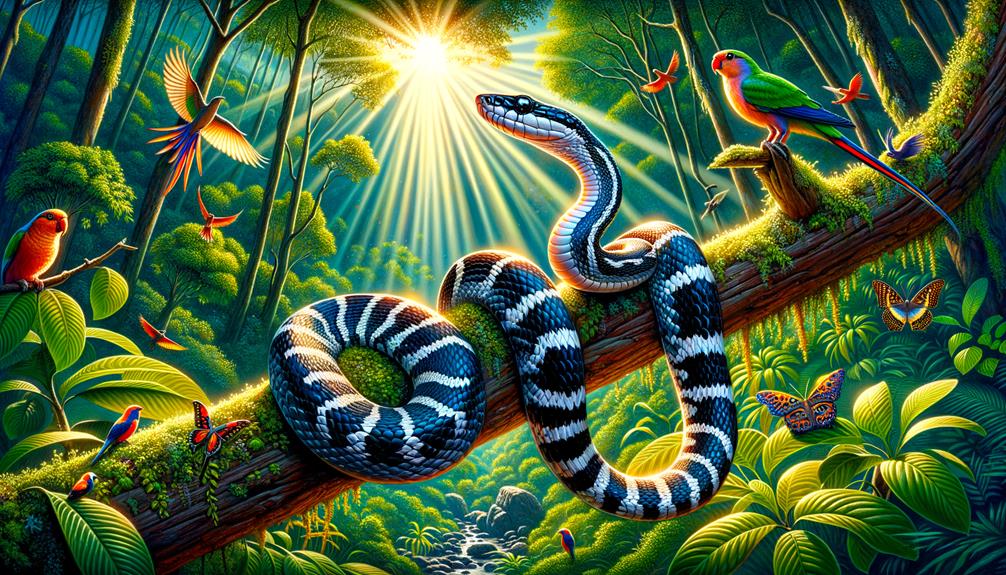
The Antiguan racer snake's remarkable recovery from just 50 individuals to over 1,100 is a testament to the impact of dedicated conservation efforts and community-led initiatives. By removing invasive predators like rats and mongooses from 16 of the 30 islands, we created a safe haven for this endangered species, allowing us to reintroduce it to multiple sites where it has thrived.
This conservation work has had a ripple effect, sparking a broader ecological revival. Bird colonies on the cleared islands have seen a staggering 30-fold increase, highlighting the interconnectedness of ecosystems and the critical role each species plays.
The Antiguan racer has become a national symbol, featured in the education curriculum and celebrated through the Floating Classrooms program, which engages students in conservation. This initiative instills a sense of ownership and pride in the country's natural heritage.
The success of the Antiguan Racer Conservation Programme, driven by collaborative partnerships and community involvement, serves as a model for the recovery of other endangered species. It inspires us to continue our conservation mission, demonstrating that collective efforts can lead to meaningful change.
Future Outlook
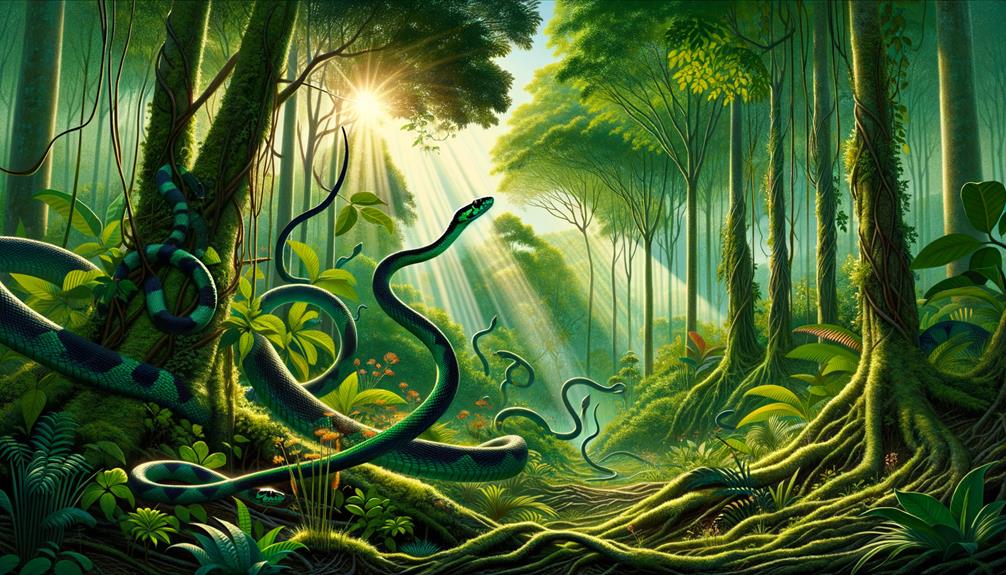
Ensuring the Antiguan racer snake's survival demands persistent conservation efforts and innovative strategies. As we look to the future, we must focus on several key areas to protect this rare species from extinction.
Expanding the range of Antiguan racers by introducing them to more offshore islands, like Great Bird Island, cleared of invasive predators, is crucial for their survival.
Continuous monitoring and research are vital to understanding the snake's ecology, allowing us to adapt and refine our conservation tactics for long-term success.
Education and engagement programs are essential for building support and fostering a sense of responsibility among locals, who play a critical role in the conservation effort.
The success of the Antiguan Racer Conservation Project can serve as a model for preserving other endangered species in the Caribbean.
With a dedicated commitment to these strategies, we can ensure that the Antiguan racers not only survive but thrive. It's a testament to what can be achieved when a community comes together to safeguard a species' freedom to exist and flourish in its natural habitat.
Frequently Asked Questions
Why Is the Antiguan Racer Snake Endangered?
The Antiguan racer snake is on the brink of extinction due to the devastating impact of deforestation, agricultural expansion, and the introduction of invasive predators like ship rats and Asian mongooses. These factors have ravaged their habitat, leaving them to cling to survival on a tiny island that remains mongoose-free.
How Many Antiguan Racers Are Left?
You're wondering how many Antiguan racers are left, aren't you? After years of decline and intense conservation efforts, the population now stands at roughly 500 individuals. This modest success is still precarious.
What Are Some Interesting Facts About the Antiguan Racer?
The Antiguan racer, a non-venomous snake, primarily feeds on tree-dwelling Anolis lizards. After nearly facing extinction in the 1930s, conservation efforts have helped increase its population to around 1,100 individuals. Its remarkable tree-climbing abilities play a crucial role in maintaining ecological balance.
Why Were Mongooses Brought to Antigua?
Mongooses were introduced to Antigua in the 1890s as a misguided solution to control the island's black rat population. However, their insatiable appetite for local wildlife had devastating consequences, particularly for the Antiguan racer snake, which suffered greatly at the hands of these predators.


